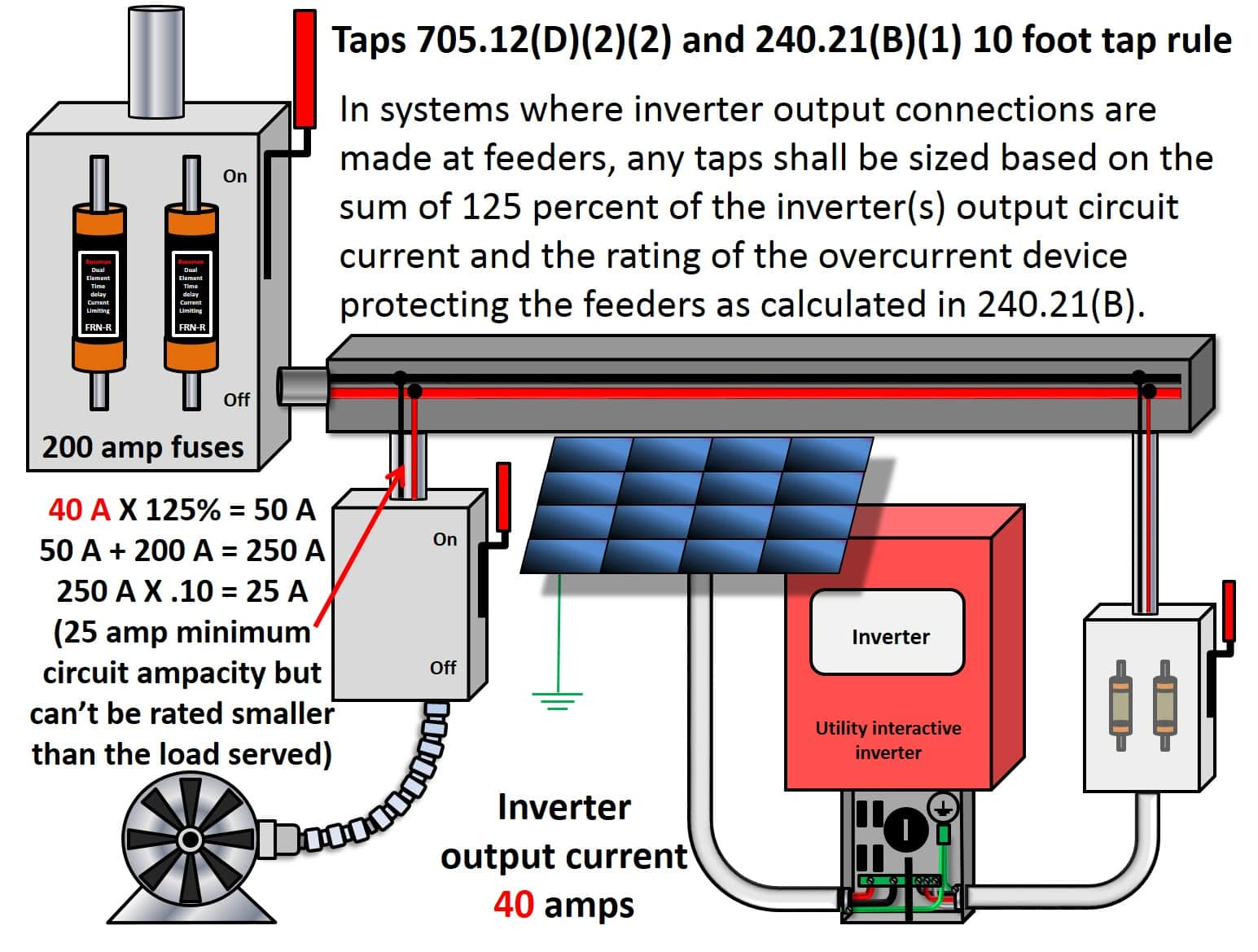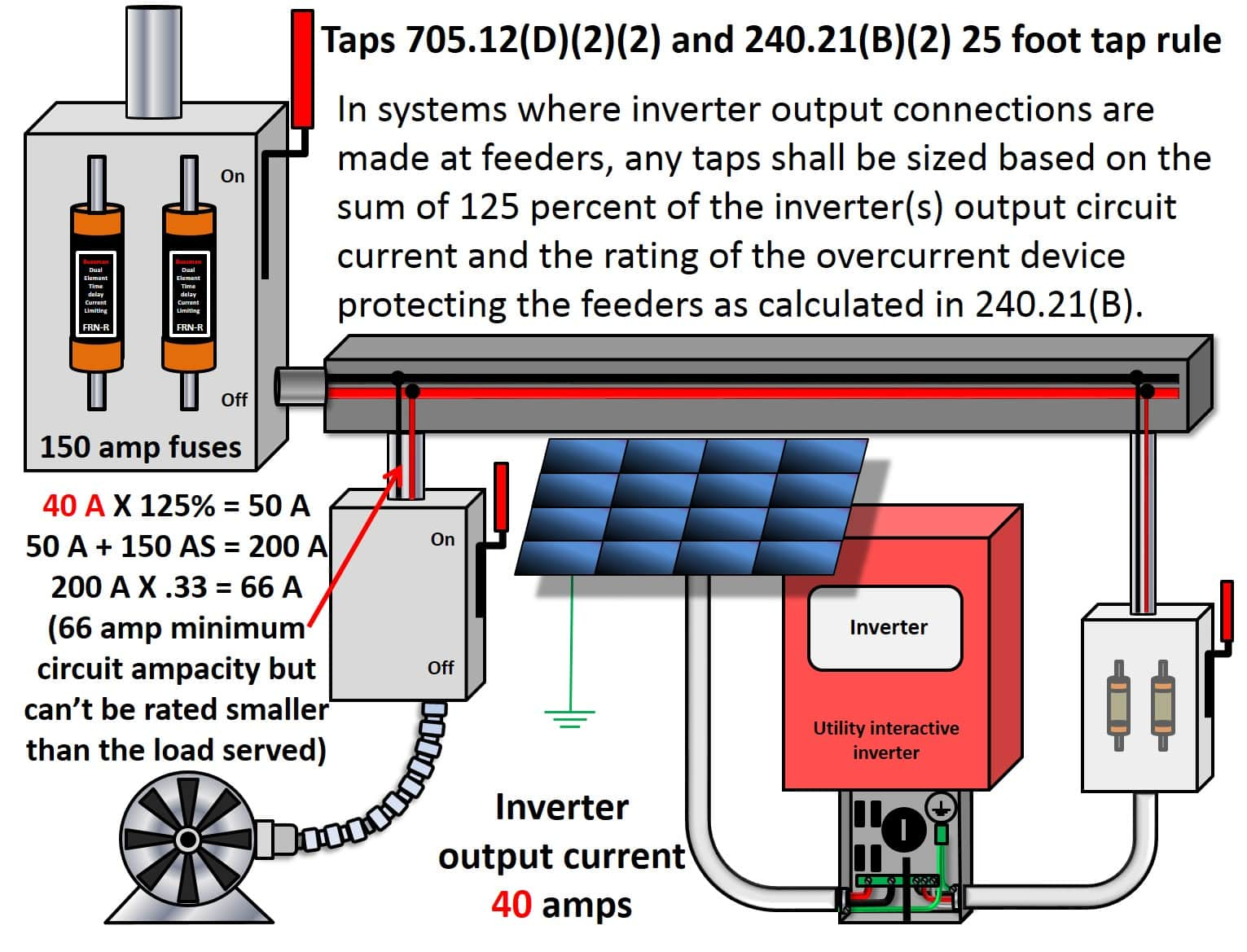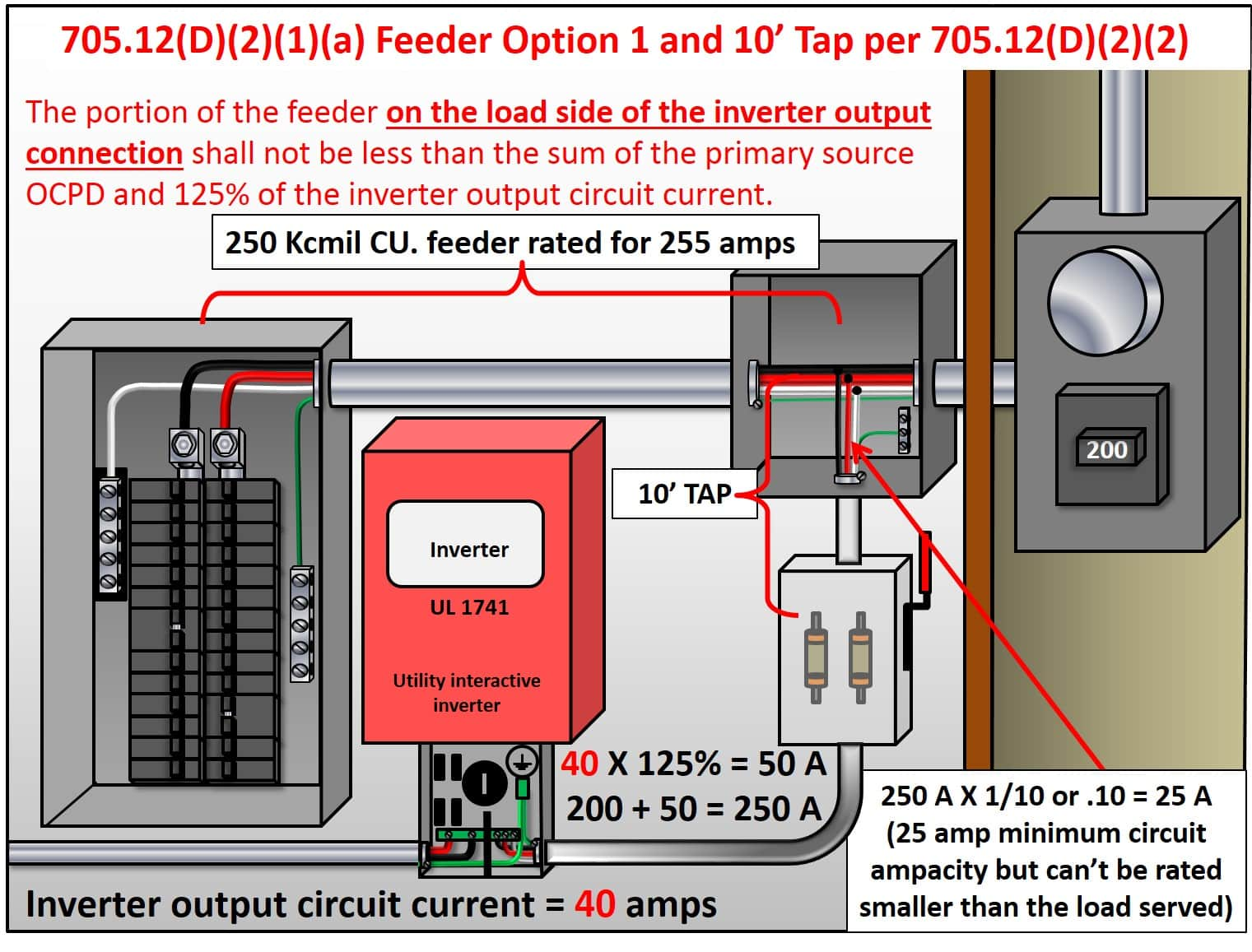2014 NEC 705.12(D)(2) PV Interconnections Part 2
Published on September 26, 2014 by JADE Learning
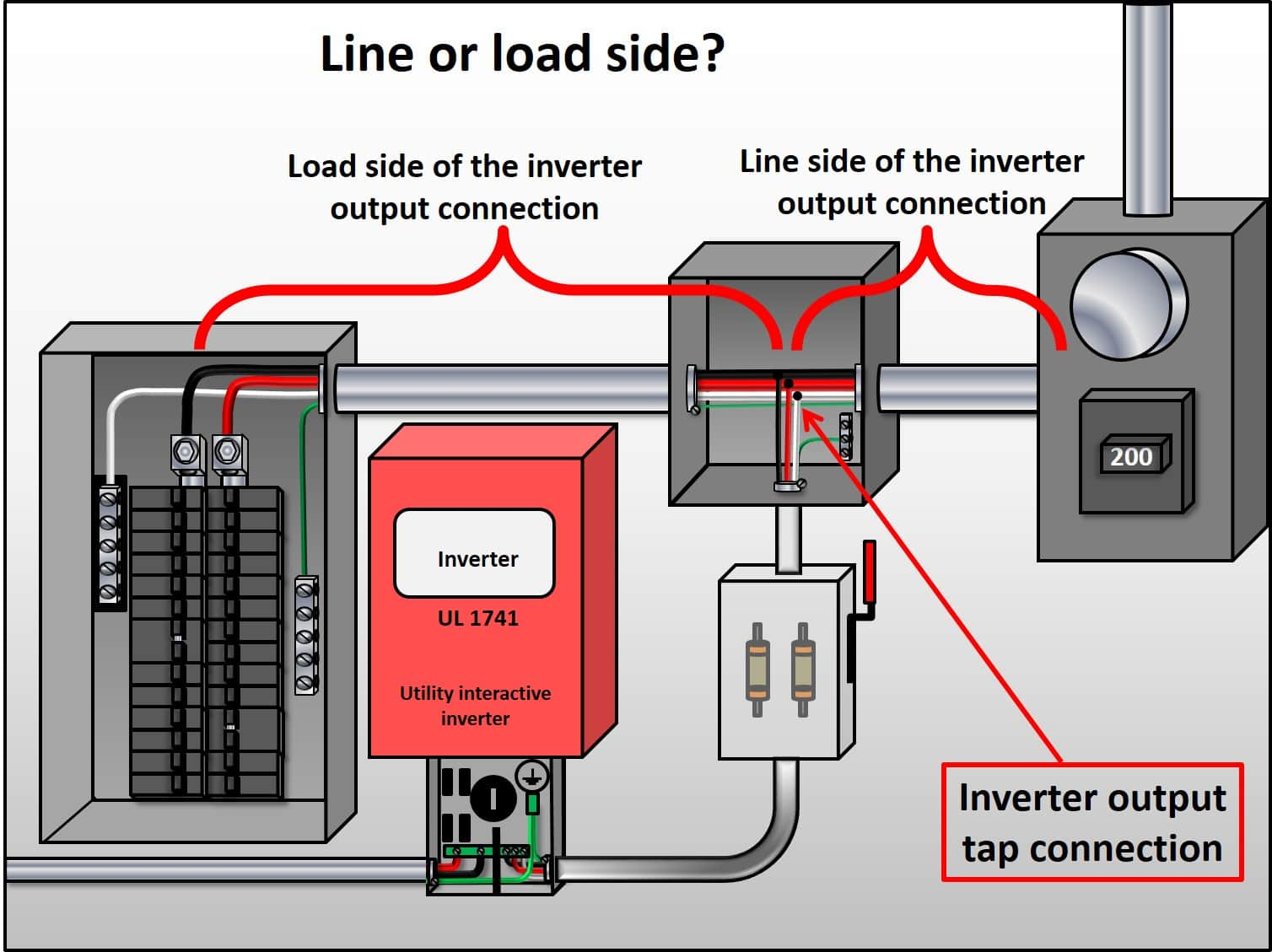
In the previous post we jumped ahead to 705.12(D)(2)(3) to cover the interconnection rules related to busbars since the backfed circuit breaker to busbar connection is most commonly used when connecting a utility interactive PV system to the grid. Now let's back up a bit to 705.12(D)(2)(1) & (2) and go over the new feeder and tap connection options.
If the point of interconnection will be made at a feeder, other than the opposite end of the primary overcurrent protective device (OCPD), then there are two options and both apply only to the portion of feeder on the load side of the inverter output connection. Before any of the new rules can be applied, it is important to understand which side is the line side and which side is the load side of the inverter output connection.
- Option one, 705.12(D)2)(1)(a) (image 2): The section of feeder on the load side of the inverter output connection must be rated no less than the sum of the primary source OCPD and 125% of the inverter output circuit current. The inverter output circuit current is listed on the nameplate of the inverter but can also be calculated by dividing the wattage of the inverter by the applied voltage.
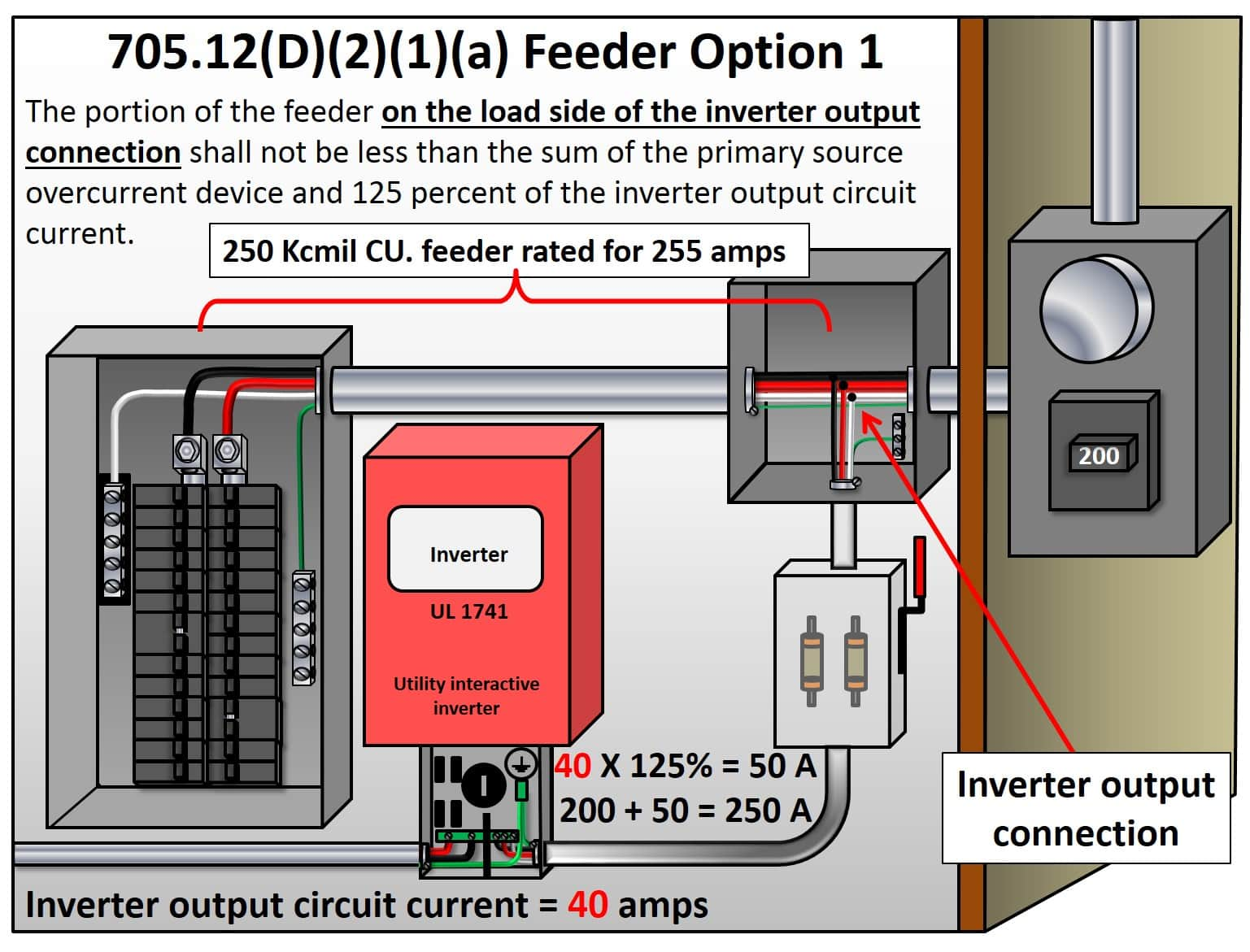
705.12(D)(2)(1)(a) Feeder Option 1 - Option two, 705.12(D)(2)(1)(b) (image 3):An OCPD on the load side of the inverter connection cannot be rated greater than the ampacity of the feeder. Notice in the image that the circuit breaker on the line side of the inverter connection can be rounded up to the next standard size per 240.4(B) in order to protect the 500 kCMIL feeders but the circuit breaker on the load side of the inverter connection cannot.
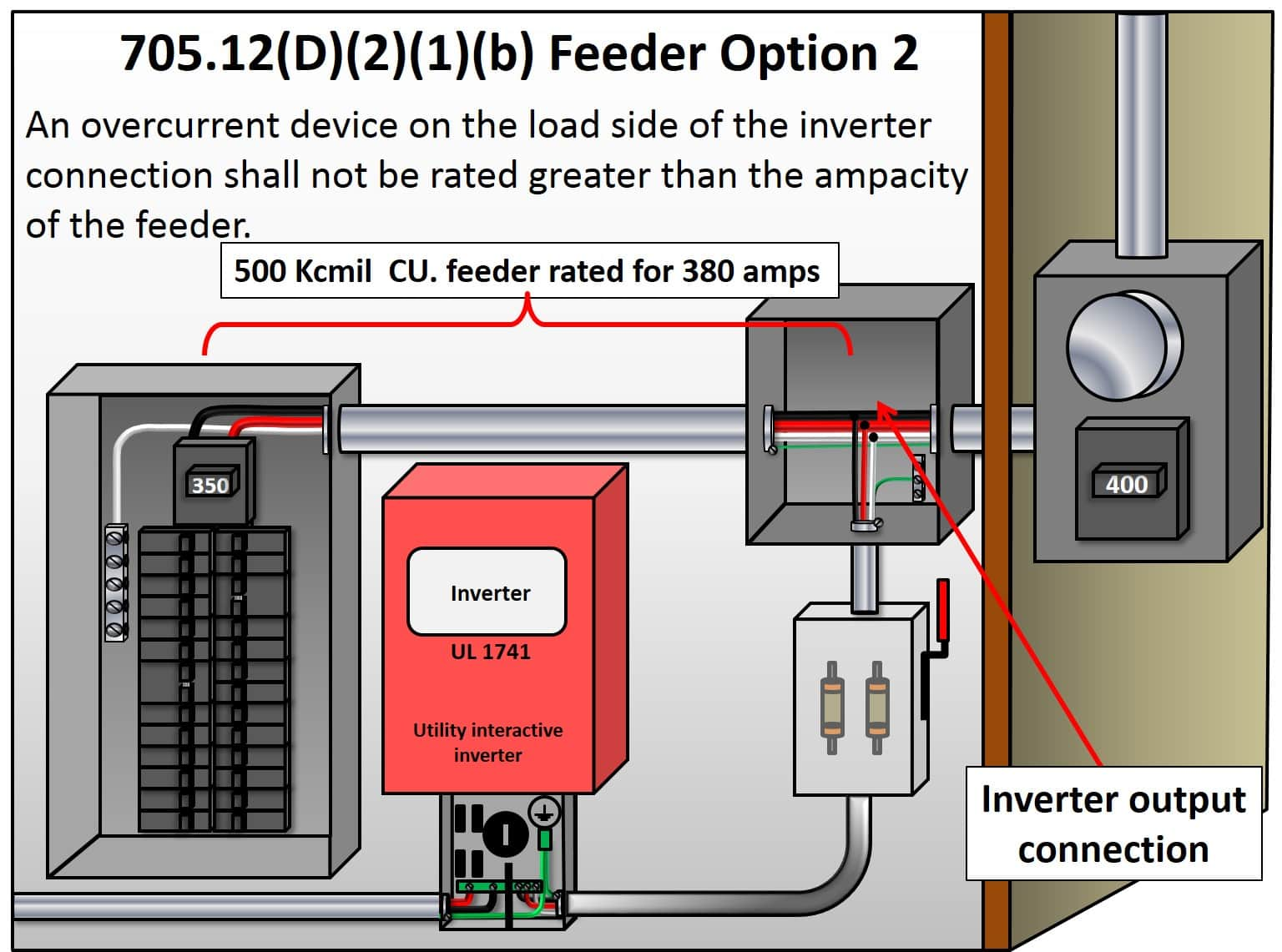
705.12(D)(2)(1)(b) Feeder Option 2
Section 705.12(D)(2)(2) is a short paragraph and covers all taps where PV systems are involved. This includes the tap for the inverter output circuit as well as any other taps off of the same feeder. If the point of interconnection will be made through a feeder tap or to a feeder that also supplies other taps, then all tap conductors must be rated for 125% of the inverter output circuit current plus the sum of the OCPD protecting the feeder being tapped as calculated in 240.21(B). This means that whichever tap rule in 240.21(B) is being used, 125% of the inverter output circuit current must be added to the size of the OCPD protecting the feeder being tapped and then the appropriate tap rule from 240.21(B) can be used. This does not mean that the OCPD protecting the feeder being tapped must be increased in size. The intent is to factor in the contribution from the PV system which increases the amount of current potential on the tap conductors. See the following images for practical tap examples.
